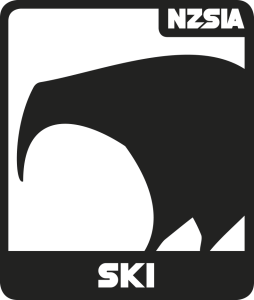Dynamic Transition
 What, Why, How
What, Why, How
What
Developing the transition combines the release and create phases of the turn and is the first step towards performance skiing. A medium radius turn should be round, predominantly carved, and within a 12 to 15 metre corridor (three to four groomer widths).
Why
Performance skiing is the highest level of skiing, it is the most exhilarating and satisfying feeling a skier can have.
How
Develop vertical movements of the legs to manage the increase in pressure felt through the transition, and lateral movements of the legs and body to transition the CoG from one turn to the next smoothly.
VIDEO: Developing Dynamic Medium Turns with Lena-May Peraudo
 Technical Know-how
Technical Know-how
What’s New
Skiing with higher levels of ski performance at faster speeds.
Performance Tips
Body: Focus on using a greater range of flexion to manage the pressure during the release phase, and extension to control the path of the CoG forward and across the BoS in the create phase.
Turn phases: Introduce the transition, a fluid combination of the release and create phases, when skiing at high speed.
Skills
Situational Understanding
- Increase the speed of travel, allowing performance skiing to take place
- Use steep blue, red or easy black groomed slopes
- If using a wider ski, edging will become harder, resulting in inefficient movements to edge the ski
- Develop awareness of the transition, combine the release and create phases for performance skiing
- Develop awareness of flexion to aid edge release
Active Stance & Balance
- Develop a greater range of flexion through the release of the turn to smoothly manage the pressure from one turn to the next
- Use extension to guide the CoG forward with the skis through the create phase, maintaining a centred stance at higher speeds
Outside Ski Balance
- Develop the timing of outside ski balance and weight shift to coincide with extension of the new outside leg through the transition
Edging
- Allow the CoG to move further inside the turn during the create phase, this is facilitated by travelling at higher speeds
- Use inclination of the legs to initiate the lateral movement inside the turn
- Combine flexion and lateral movement of the CoG across the skis to time the release of the turn
Steering
- Manage leg steering to minimise ski rotation throughout the turn
- Use rotational movement of the legs to roll the femurs from one turn to the next during the transition
Ski Snow Interaction
- Steering angle will be minimal throughout the turn and begin to be created by utilising ski design
- Use edge angle to predominantly control the size and shape of the turn
- The platform angle will reach 90 degrees in the control phase, establishing grip and a groove for the ski to travel forward in
 Teaching Tactics
Teaching Tactics
Terrain
Steeper blue/red groomed terrain or easy black groomed terrain.
Class Handling
One area that you are encouraging is a little more speed, so make sure that where you do this on the mountain is suitable. If it is too busy, or too bumpy, you might need to rethink and try this on another day. Don’t forget to educate your students about looking ahead and visualising where they are going, so that they can anticipate something in front of them that may require a change in their path to manage their own safety. Encourage students to space out when performance skiing.
Example Activities
- Communicate what you want students to achieve and give it a go
- Make sure turn shape and speed are allowing for success
- Encourage patience through the transition to give time to organise skis and body movements
- Focus on the timing of flexion in the release phase
- Anticipate the weight shift and time vertical movement
- Use extension to allow students to move forward with the skis
- Focus on inclination of legs in the create phase
- Focus on controlled steering through transition

